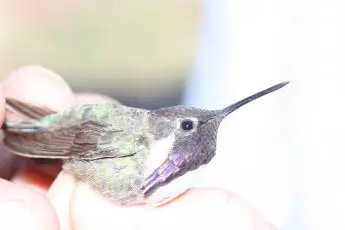Introduction
Quick Navigation
Hummingbirds, like cardinal birds, are a group of birds native to the North and South America. According to the biological classification of animals, hummingbirds belong to the kingdom Animalia; order Apodiformes; family Trochilidae; and class Aves. They occur in Alaska and southern California parts of the United States; southern British Columbia, Edward Island, southern Quebec, and Ontario in Canada; and in Cuba, Columbia, Ecuador, and Mexico in Central and south America. They fly around in homes, gardens, and back yards. These birds have ability to recognize humans, and so easily get accustomed to people especially when they fly across them regularly. There is no likelihood that someone can contract diseases when they come in contact with hummingbirds. They are not dangerous but very friendly birds. However, there are existing laws which have been enacted to prohibit and prosecute trapping, holding, hunting, and poaching of hummingbirds especially in the United States. Hummingbirds are a symbol of happiness and good luck. Their beautiful color brings excitement, and enhances positive motivation toward a new day, especially when they are sighted in the dawn of a day. Hummingbirds are a symbol of affection, happiness, and the pleasant things of life. Hummingbirds may be aggressive to one another when not much nectar is available to feed on. They like to fly around early in the morning and late in the afternoon.
Morereference
What Hummingbirds Represent
When a hummingbird flies to someone’s house, it is believed to be a sign of affection, good luck, and excitement. Even when the prevailing situation is bad, sighting a hummingbird represents hope for a turnaround.
When someone dreams of a hummingbird, it is a symbol of grace, motivation, and strength to accomplish one’s goals.
In North and South America where hummingbirds are resident, they formally symbolize harmony, industriousness, integrity, and beauty. In addition, hummingbirds are often visualized as a symbol of healing, and a helper.
Uniqueness of Hummingbirds
Among the key features that distinguish hummingbirds from other birds are highlighted as follows:
There are many species. Hummingbirds are perhaps the most diverse species of birds that ever exist. Experts say there are over 330 species of them! This is quite intriguing.
They are excellent eaters. Hummingbirds eat a lot in daytime as they require a lot of energy to carry them through the day. This eating habit is rightly supported by high metabolism. The birds fly about eating nectar, beetles, insects, aphids, ants, mosquitoes, wasps, among other things.
They are very small. Hummingbirds are the smallest of all the birds that exist! Their eggs and nests are also small.
Only female hummingbirds engage in building nests and in raising baby hummingbirds. The male hummingbird will more likely find another mate as soon as baby hummingbirds are hatched.
They are travelers. Hummingbirds, unlike cardinal birds are highly migratory. They can travel as far as 2000 miles in one trip!
Hummingbirds have excellent flying styles. The birds can fly forward, backward, and upside down. They also fly fast, and their body parts such as wings and heart move as fast as they fly.
They are anti-social animals, and have high retentive memory. Usually, a hummingbird flies solitarily; the occurrence of rival hummingbird often results in series of chases and competition. This becomes more evident when the birds belong to opposite genders. Also, the birds can remember virtually everything they have ever done! For example, hummingbirds can remember people, previous feeding locations, and every flower they have visited. In addition, they go into torpor, a state of rest that is similar to sleep.
Cleaning Hummingbird Feeders Step by Step
A hummingbird feeder is a device that holds feeds of hummingbirds and in which the birds feed. A hummingbird feeder may be placed in any open space such as in the backyard, garden, lawn, or pavement. Cleaning a hummingbird feeder is simple and straightforward, and does not require special technicalities. The following steps may guide through cleaning a hummingbird feeder:
Disassemble the feeder. The first step is to remove every part of the feeder. If dirt and nectar have clogged to the feeder, carefully unscrew the base and soak the feeder in water for 10 or 15 minutes to detach the dirt.
Discard old nectar from the reservoir. This should be done outdoor so as to not attract pests indoor.
Scrub the reservoir with the use of a bottle brush and mild dish soap solution. The inside and outside parts of the reservoir should be scrubbed thoroughly. The exterior part may be washed with the aid of a soft cloth or sponge to remove any mold or residue that might have stuck on it.
Drain the feeding ports and base to get rid of any remaining unwanted materials. This procedure is better achieved by running clean water through the narrow port and scrubbing through it with a tooth brush or bristle brush.
Rinse the base, ports, reservoir thoroughly to satisfaction for a few seconds to remove any soap residue.
Allow each part of the feeder to air-dry thoroughly to ensure that fresh nectar is not diluted filled into the feeder.
Reattach the feeder parts. The different parts of the feeder should be fitted in place.
Fill up the feeder with fresh, clean feeder, and hang it in an open space visible to hummingbirds. Soon, hummingbirds will come to eat from the feeder.
Conclusion
Hummingbirds, their small bodies notwithstanding, are an important component of the ecosystem. The importance of this species of birds results from the roles they play in the natural ecosystem on one hand, and the unique features that distinguish them from other species of birds, and also enable them to perform their roles efficiently in their habitat. The process involved in cleaning the hummingbird feeder as well as the unique features, and what hummingbirds represent are reviewed in this article. This should contribute to improved wellbeing of these birds and their conservation for future generations.

